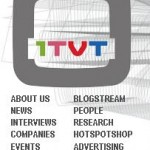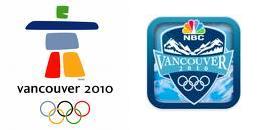Final TV Tally for 2010 Olympics: 190 Million Viewers in the U.S., 3.5 Billion Viewers Worldwide
Mar 5, 2010 Industry News
Mike Reynolds’ article in Multichannel News reports 190 million US viewers for the full 2010 Winter Olympics in Vancouver. This is 3 million more than watched the Salt Lake City Olympics in 2002, 6 million more than watched the Torino Olympics in 2006. This year’s Winter Olympics was second only to the 1994 Olympics in Lillehammer – which had 204 million US viewers, in part because of the attention drawn by the Nancy Kerrigan/Tanya Harding incident.
According the Vancouver Olympics website, 3.5 billion viewers worldwide watched this years’ events. That’s billion, with a b.
This kind of viewership flies in the face of claims by emerging media that TV is growing irrelevant. This kind of massive simultaneous experience is in the middle of the TV’s wheelhouse, and the smaller screens seem to play a more of supporting role in them. TV is best at the while-its-happening experience where you want to see every detail and experience it all as if you were sitting in the crowd, but were somehow omniscient and capable of flying to whatever angle showed the action best. This strength is leveraged to best effect when there is a live broadcast such as the final Sunday night when the US v. Canada hockey final was battled to an overtime Canada victory. People watched on their TVs, and used their computers and smartphones to tweet about it.
Did You Play With Your TV? (a shameless plug for my #1 client, Ensequence)
If you saw the Olympics via Dish Networks or Verizon FiOS, then you could access weblike interactive content on your TV screen alongside your favorite Olympics events on MSNBC, CNBC, or USA – if you clicked and interacted, leave a comment and tell me about it. What did you like about it? What did you hate about it?
Tags: 2010 Olympics, interactive experience, Interactive Television, Interactive TV, Interactivity, Mike Reynolds, Multichannel News, Olympics, Olympics Interactive, TV Vewers, US TV Viewers, Vancouver, Worldwide TV Viewers
Cable Moving Steadily To Advanced Advertising (DBS Has A Healthy Lead In This Race)
Feb 26, 2010 Industry News, TV and iTV Analytics

Per this story by Steve Donahue in Light Reading Cable, Canoe is setting expectations for measured, steady progress in advanced advertising via cable. Interactivity is beginning to be rolled out now, but targeting at the individual household level is 4-5 years away.
Seth Haberman of Visible World is quoted in the article as estimating that 60-70 million households will be interactive and addressable and interactive during that 4-5 year timeframe.
Between now and then, the story will be all about EBIF deployment and steady increase in the sophistication of interactive capabilities offered. EBIF households should reach upwards of 20 million households by the end of 2010. DBS operators Dish Networks and DirecTV already offer substantial interactivity in programs and advertising to 29 million households. You might be wondering what the heck EBIF is. It stands for Enhanced TV Binary Interchange Format, but really all you need to know is that it is a set of standards that will make it possible to deploy the same interactive code across all platforms that have implemented the standard. It looks like that will eventually be most Cable MSOs and IPTV providers.
What does this mean? Well, it means the long-awaited promise of TV interactivity is going to be gradually fulfilled. For programming, that means enhanced content and audience participation. For advertising, it means addressability, interactivity, and response built into ads. Finally, it means T-Commerce, which will make shopping on TV as easy and ubiquitous and easy as shopping on the web, and that will be available in programs and in ads.
The question is this: Will the internet absorb the functionality of TV (“Over-The-Top” delivery of TV programming) before TV absorbs the functionality of the Internet? We will have to wait and see. I think both will continue to exist, but will morph and mutate differently because they essentially serve different different viewer purposes and usage occasions.
The winners will be marketers and advertisers who crack the code about the right division of labor between the Internet, television, and mobile, delivering brand experiences that take advantage of the unique strengths of each available channel.
Tags: Addressability, Advanced Advertising, Cable, Cable Light Reading, DBS, EBIF, EBIF Households, Interactive Television, Interactive TV, Interactivity, Satellite TV, set-top box, Seth Haberman, T-Commerce
Opening Weekend for 2010 Winter Olympics: 117 Million US Viewers
Feb 16, 2010 Industry News, TV and iTV Analytics
Check out this article by Robert Seidman on TVbytheNumbers.com In it, he cites Nielsen ratings indicating this year’s opening ceremonies beat the Torino Olympics’ opening weekend by 5 million viewers. The average of 28.6 million viewers over the first weekend beat Torino’s first weekend by 25%.
This beats the 106.5 million viewers last weekend for the Super Bowl (see the prior post in this blog), but that was much more concentrated in time. The Super Bowl got a 68 share while the Olympics first weekend got a 26.
The Olympics also did well on the smaller screens. Three Olympics apps are currently in the top 10 on iTunes, and NBCOlympics.com traffic is 250% higher than it was for Torino. It has only been a few days, but there have already been more unique viewers for NBCOlympics.com during the Vancouver Olympics than than there were for the whole Torino Olympics.
Play With Your TV! (a shameless plug for my #1 client, Ensequence)
If you are watching the Olympics via Dish Networks or Verizon FiOS, then you can access weblike interactive content right on your TV screen alongside your favorite Olympics events. Once you tune to MSNBC, CNBC, or USA, a prompt will pop up (nothing on NBC itself, as far as I know). Clicking the “Select” button on your remote starts an interactive experience that includes Top Stories, Medal Counts, Athlete Bios, and more. Real interactive TV in the wild. Check it out!
Tags: Analytics, audience, Bill Seely, Ensequence, Inteactive Television, Interactive TV, Metrics, Nielsen, Olympics, Olympics Interactive, Practical Marketing Analytics, Robert Seidman, TV and iTV Analytics, TV Ratings, TV Viewers, Viewership
Interactive TV Today Cites Practical Marketing Analytics RE: the Future of iTV
Dec 11, 2009 Industry News, TV and iTV Analytics

I got some coverage in iTVT! (See the link HERE.) Rick Howe, who writes a regular column for iTVT called “The iTV Doctor is In!” ran a response from me today in his year-end wrapup. He is doing a series of columns featuring iTV industry pundits’ answers to this question:
“Dateline: December 22, 2012 – Well, we got past the Mayan “end of the world” prophecy and the world didn’t end. In point of fact, our little corner of the world–interactive television–is doing quite nicely, thank you. We have dozens of enhanced/interactive television programs airing every night in over 60 million homes; advertisers have stepped up, and are now paying a healthy premium for interactive spots; and viewers now EXPECT interactivity in their favorite shows–it’s just part of the experience.
What was the single most significant factor that led to this success?”
Anyway, it was a cool assignment, and I won’t spoil the fun by telling you my full answer here, but standards and user-oriented design are where I placed the future credit the amazing success that I hope happens. To get my full response, along with those from Arthur Orduna (CANOE’s CTO) and Ellen Dudar (FourthWall Media’s Chief Product Officer), go read the ARTICLE.
Tags: Arthur Orduna, Bill Seely, Canoe, core audience, core viewership, Ellen Dudar, Fourthwall Media, interactive experiences, Interactive Television, Interactive TV, Interactive TV Today, itvt.com, Practical Marketing Analytics, Rick Howe, TV and iTV Analytics
Practical Marketing Analytics’ Bill Seely interviewed in InteractiveTV Today
Oct 16, 2009 Industry News, TV and iTV Analytics
Bill is interviewed in Rick Howe’s “Dear iTV Doctor” column published today (Friday October 16, 2009). Check it out at http://bit.ly/mLaD7.
The topic was how to apply interactive television to engage and activate a TV show’s superfans. Bill talks about the impact of tailoring the design and features of an interactive experience embedded in a TV program to the needs and interests of the hard-core fans of the program.
Rick’s column appears regularly in Tracey Swedlow’s InteractiveTV Today (ITVT) (www.itvt.com), the most widely read and trusted news source on the rapidly emerging medium of multiplatform, broadband interactive television (ITV).
Tags: Bill Seely, core audience, core viewership, interactive experience, Interactive Television, Interactive TV, Interactive TV Today, Interview, itvt.com, Practical Marketing Analytics, Rick Howe, superfans, TV and iTV Analytics
How To Maximize Viewer Participation In Your Interactive TV Applications
Sep 30, 2009 Industry News, TV and iTV Analytics
Here are several ideas to drive maximum interactive participation and duration for your interactive television application:
Idea One: Begin With the End in Mind (apologies to Stephen Covey)
What is your business objective? If you get specific about what you want viewers to do with your interactive experience, you can design to make that more likely. For example, if you want viewers to interact for a long time, that favors design that is immersive and absorbing, with lots of content and lots of features. On the other hand, if you want to get the highest possible number of viewers to participate in the experience, then an unobtrusive and streamlined experience is what you want, with very focused functionality (e.g., opt in, vote for your favorite contestant, then exit).
Idea Two: Have a Compelling Viewer Value Proposition
Once you know what you want the viewer to do, you need to design an experience that meets that objective AND gives the viewer compelling value for the time they spend interacting. A weak viewer value proposition yields weak performance vs. your business goals.
Idea Three: It All Starts With a Click (No Click = No Participation)
Viewers will likely have no advance knowledge about what a particular interactive application does (or even what iTV is), or why they should care about it, so whatever is displayed on the screen to entice/enable them to start the experience is critical. I visualize the flow of viewers into an interactive application as a huge funnel with a very tiny hole in it. You want to:
1. Make the hole at the bottom of the funnel less tiny – make the prompt visible, enticing, and self-explanatory
2. Increase the “pressure” in the funnel – present a call to action that makes it obvious and compelling why viewers should interact (communicate your viewer value proposition)
3. Fill the funnel with as many potential interactors as possible – by presenting the opportunity to start the experience to as many of viewers as possible.
Idea Three: Present Many Opportunities to Opt In
Interactive experiences with more opportunities to enter them get more viewers participation. That means:
1. Present the opportunity more frequently during a given program or ad
2. Present the opportunity in multiple contexts (triggers in programs or ads as well as listings and banners in operator interactive portals)
3. Present the opportunity at multiple times of day
Tags: audience, Bill Seely, How-To, interactive experience, Interactive Television, Interactive TV, Metrics, Optimize, Performance, Practical Marketing Analytics, set-top box, TV and iTV Analytics, viewer value proposition
